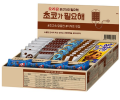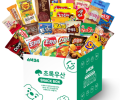[번역] 라라벨 Comment Nesting 정보
라라벨 [번역] 라라벨 Comment Nesting
본문
https://appdividend.com/2018/06/20/create-comment-nesting-in-laravel/
Laravel에서 주석 중첩을 처음부터 만드는 방법
Laravel에서 댓글 중첩을 만드는 법 처음부터 오늘은 주요 주제입니다. 특정 주제 포럼에서는 어떤 사람의 의견에 답장을하고 그 사람의 의견에 답장해야하는 구조가 항상 있습니다. 따라서 댓글 중첩은 모든 웹 애플리케이션에서 매우 유용합니다. 이는 공개 관심을 나타냅니다. 이 자습서에서는 처음부터 다시 시작하겠습니다. 이 예제에서는 Polymorphic 관계를 사용합니다.
Laravel에서 처음부터 스크랩 한 중첩 만들기
항상 그렇듯이 다음 명령을 사용하여 Laravel을 설치하십시오. 나는 Laravel Valet을 사용하고 있습니다.
1 단계 : Laravel 설치 및 구성
laravel new comments
# or
composer create-project laravel/laravel comments --prefer-dist
프로젝트로 이동하십시오.
cd comments
편집기에서 프로젝트를 엽니다.
code .
.env 파일에 MySQL 데이터베이스를 구성하십시오.
다음 명령을 사용하여 인증을 작성하십시오.
php artisan make:auth
이제 다음 명령을 사용하여 데이터베이스를 마이그레이트하십시오.
php artisan migrate
2 단계 : 모델 만들기 및 마이그레이션.
다음 명령을 사용하여 Post 모델 및 마이그레이션을 작성하십시오.
php artisan make:model Post -m
포스트 마이그레이션 파일에서 스키마를 정의하십시오.
// create_posts_table
public function up()
{
Schema::create('posts', function (Blueprint $table) {
$table->increments('id');
$table->string('title');
$table->text('body');
$table->timestamps();
});
}
또한 주석 모델 및 마이그레이션을 작성해야하므로 다음 명령을 사용하여 작성하십시오.
php artisan make:model Comment -m
이제 우리는 모델 사이의 다형성 관계를 사용할 것입니다. 그래서 우리는 그런 방식으로 스키마를 정의해야합니다.
// create_comments_table
public function up()
{
Schema::create('comments', function (Blueprint $table) {
$table->increments('id');
$table->integer('user_id')->unsigned();
$table->integer('parent_id')->unsigned();
$table->text('body');
$table->integer('commentable_id')->unsigned();
$table->string('commentable_type');
$table->timestamps();
});
}
이제 다음 cmd를 사용하여 데이터베이스를 마이그레이션하십시오.
php artisan migrate

3 단계 : 다형성 관계 정의.
이제 모델 사이의 다형성 관계를 정의해야합니다. 그래서 app >> Post.php 파일에 다음 코드를 작성하십시오.
<?php
// Post.php
namespace App;
use Illuminate\Database\Eloquent\Model;
class Post extends Model
{
public function comments()
{
return $this->morphMany(Comment::class, 'commentable')->whereNull('parent_id');
}
}
여기에서는 parent_id가 null 인 모든 주석을 작성했습니다. 그 이유는 부모 수준 주석을 표시하고 부모 수준 주석을 저장해야하기 때문입니다. 그래서 이유가 있습니다. 우리는 코멘트와 그 답변을 구별 할 필요가 있습니다.
게시물은 또한 사용자에게 속합니다. 그래서 우리는 그 관계를 정의 할 수 있습니다.
<?php
// Post.php
namespace App;
use Illuminate\Database\Eloquent\Model;
class Post extends Model
{
public function user()
{
return $this->belongsTo(User::class);
}
public function comments()
{
return $this->morphMany(Comment::class, 'commentable')->whereNull('parent_id');
}
}
포스트와 코멘트 관계를 정의하십시오. Comment.php 파일에 다음 코드를 작성하십시오.
<?php
// Comment.php
namespace App;
use Illuminate\Database\Eloquent\Model;
class Comment extends Model
{
public function user()
{
return $this->belongsTo(User::class);
}
}
3 단계 :보기, 컨트롤러 및 경로를 정의합니다.
다음 명령을 사용하여 PostController.php 파일을 만듭니다.
php artisan make:controller Postcontroller
다음 단계는 뷰의 경로를 정의하고 데이터베이스에 게시물을 저장하는 것입니다. 다음 코드를 route >> web.php 파일에 작성하십시오.
<?php
// web.php
Route::get('/', function () {
return view('welcome');
});
Auth::routes();
Route::get('/home', 'HomeController@index')->name('home');
Route::get('/post/create', 'PostController@create')->name('post.create');
Route::post('/post/store', 'PostController@store')->name('post.store');
PostController.php 파일에 다음 코드를 작성하십시오.
<?php
// PostController.php
namespace App\Http\Controllers;
use Illuminate\Http\Request;
class PostController extends Controller
{
public function __construct()
{
return $this->middleware('auth');
}
public function create()
{
return view('post');
}
public function store(Request $request)
{
// store code
}
}
이제, 먼저, 게시물을 만들기위한 양식을 만들어야합니다. 그래서 resources>>views 폴더 안에 블레이드 파일을 생성하고 post.blade.php라고 부릅니다. post.blade.php 파일에 다음 코드를 작성하십시오.
@extends('layouts.app')
@section('content')
<div class="container">
<div class="row justify-content-center">
<div class="col-md-8">
<div class="card">
<div class="card-header">Create Post</div>
<div class="card-body">
<form method="post" action="{{ route('post.store') }}">
<div class="form-group">
@csrf
<label class="label">Post Title: </label>
<input type="text" name="title" class="form-control" required/>
</div>
<div class="form-group">
<label class="label">Post Body: </label>
<textarea name="body" rows="10" cols="30" class="form-control" required></textarea>
</div>
<div class="form-group">
<input type="submit" class="btn btn-success" />
</div>
</form>
</div>
</div>
</div>
</div>
</div>
@endsection
이제 resources>>views>>layouts>>app.blade.php 파일로 이동하여 링크를 추가하여 게시물을 만듭니다.
탐색 바의 @else 부분에 링크를 추가해야합니다. 따라서 사용자가 성공적으로 로그인하여 다른 방법으로 게시물을 만들면 게시물을 만들 수 없습니다.
@else
<li class="nav-item">
<a class="nav-link" href="{{ route('post.create') }}">Create Post</a>
</li>
이제 http://comments.test/register 링크로 이동하여 사용자를 등록하십시오. 로그인하면 Navbar에서 Create Post를 볼 수 있습니다. 해당 항목을 클릭하면 http://comments.test/post/create 경로로 리디렉션됩니다. 보시다시피, 우리의 양식은 제목과 본문 양식 필드가 있습니다.
4 단계 : 게시물을 저장하고 표시합니다.
이제 우리는 데이터베이스에 게시물을 저장해야하므로 PostController.php 파일의 저장소 함수에 다음 코드를 작성하십시오.
<?php
// PostController.php
namespace App\Http\Controllers;
use App\Post;
use Illuminate\Http\Request;
class PostController extends Controller
{
public function __construct()
{
return $this->middleware('auth');
}
public function create()
{
return view('post');
}
public function store(Request $request)
{
$post = new Post;
$post->title = $request->get('title');
$post->body = $request->get('body');
$post->save();
return redirect('posts');
}
}
게시물을 저장하면 게시물 목록 페이지로 리디렉션됩니다. 우리는 경로를 정의해야합니다. web.php 파일 안에 다음 경로를 추가하십시오.
// web.php
Route::get('/posts', 'PostController@index')->name('posts');
또한, 우리는 PostController.php 파일 안에 index 함수를 정의 할 필요가있다.
// PostController.php
public function index()
{
$posts = Post::all();
return view('index', compact('posts'));
}
views 폴더 안에 index.blade.php 파일을 만듭니다. index.blade.php 파일에 다음 코드를 작성하십시오.
@extends('layouts.app')
@section('content')
<div class="container">
<div class="row justify-content-center">
<div class="col-md-8">
<table class="table table-striped">
<thead>
<th>ID</th>
<th>Title</th>
<th>Action</th>
</thead>
<tbody>
@foreach($posts as $post)
<tr>
<td>{{ $post->id }}</td>
<td>{{ $post->title }}</td>
<td>
<a href="{{ route('post.show', $post->id) }}" class="btn btn-primary">Show Post</a>
</td>
</tr>
@endforeach
</tbody>
</table>
</div>
</div>
</div>
@endsection
이제 web.php 파일 내에서 show route를 정의하십시오. web.php 파일 안에 다음 코드 행을 추가하십시오.
// web.php
Route::get('/post/show/{id}', 'PostController@show')->name('post.show');
또한, PostController.php 파일 내에 show() 함수를 정의하십시오.
// PostController.php
public function show($id)
{
$post = Post::find($id);
return view('show', compact('post'));
}
views 폴더 안에 show.blade.php 파일을 만들고 다음 코드를 추가하십시오.
@extends('layouts.app')
@section('content')
<div class="container">
<div class="row justify-content-center">
<div class="col-md-8">
<div class="card">
<div class="card-body">
<p>{{ $post->title }}</p>
<p>
{{ $post->body }}
</p>
</div>
</div>
</div>
</div>
</div>
@endsection
이제 개별 게시물을 볼 수 있습니다. 지금까지 좋아.
다음 단계는이 게시물에 댓글을 표시하는 것입니다.
5 단계 : 댓글을 추가 할 양식을 작성하십시오.
먼저 다음 명령을 사용하여 CommentController.php 파일을 만듭니다.
php artisan make:controller CommentController
이제 우리는 특정 게시물에 댓글을 추가 할 수있는 show.blade.php 파일 내에 양식을 만들어야합니다.
show.blade.php 파일에 다음 코드를 작성하십시오.
@extends('layouts.app')
@section('content')
<div class="container">
<div class="row justify-content-center">
<div class="col-md-8">
<div class="card">
<div class="card-body">
<p><b>{{ $post->title }}</b></p>
<p>
{{ $post->body }}
</p>
<hr />
<h4>Add comment</h4>
<form method="post" action="{{ route('comment.add') }}">
@csrf
<div class="form-group">
<input type="text" name="comment_body" class="form-control" />
<input type="hidden" name="post_id" value="{{ $post->id }}" />
</div>
<div class="form-group">
<input type="submit" class="btn btn-warning" value="Add Comment" />
</div>
</form>
</div>
</div>
</div>
</div>
</div>
@endsection
그래서 우리는 댓글을 추가 할 수있는 폼을 추가했습니다. 이제 댓글을 저장할 경로를 정의해야합니다.
// web.php
Route::post('/comment/store', 'CommentController@store')->name('comment.add');
이제 store () 함수를 작성하고 morphMany() 관계를 사용하여 댓글을 저장하십시오.
<?php
namespace App\Http\Controllers;
use Illuminate\Http\Request;
use App\Comment;
use App\Post;
class CommentController extends Controller
{
public function store(Request $request)
{
$comment = new Comment;
$comment->body = $request->get('comment_body');
$comment->user()->associate($request->user());
$post = Post::find($request->get('post_id'));
$post->comments()->save($comment);
return back();
}
}
이제 모든 것이 잘된다면 이제 댓글을 추가 할 수 있습니다. 지금까지 메모를 표시하지 않았습니다. parent_id가 null 인 저장 기능을 완료하기 만하면됩니다.
6 단계 : 코멘트를 표시합니다.
이제 우리는 코멘트와 포스트 사이의 관계를 설정 했으므로 특정 포스트와 관련된 모든 코멘트를 쉽게 추출 할 수 있습니다.
그러므로 show.blade.php 파일에 다음 코드를 작성하십시오. 나는 코멘트를 표시하기 위해 전체 파일을 쓰고있다. 이것은 패런트의 코멘트입니다. 리플라이 버튼을 만든 다음 모든 리플라이를 표시해야합니다.
<!-- show.blade.php -->
@extends('layouts.app')
@section('content')
<div class="container">
<div class="row justify-content-center">
<div class="col-md-8">
<div class="card">
<div class="card-body">
<p><b>{{ $post->title }}</b></p>
<p>
{{ $post->body }}
</p>
<hr />
<h4>Display Comments</h4>
@foreach($post->comments as $comment)
<div class="display-comment">
<strong>{{ $comment->user->name }}</strong>
<p>{{ $comment->body }}</p>
</div>
@endforeach
<hr />
<h4>Add comment</h4>
<form method="post" action="{{ route('comment.add') }}">
@csrf
<div class="form-group">
<input type="text" name="comment_body" class="form-control" />
<input type="hidden" name="post_id" value="{{ $post->id }}" />
</div>
<div class="form-group">
<input type="submit" class="btn btn-warning" value="Add Comment" />
</div>
</form>
</div>
</div>
</div>
</div>
</div>
@endsection
이제 댓글을 추가하면 동일한 URL에 우리가 표시됩니다.
7 단계 : 답장 양식을 작성하고 답장을 저장하십시오.
<?php
// Comment.php
namespace App;
use Illuminate\Database\Eloquent\Model;
class Comment extends Model
{
public function user()
{
return $this->belongsTo(User::class);
}
public function replies()
{
return $this->hasMany(Comment::class, 'parent_id');
}
}
여기에서 답장 함수에서 부모 주석 ID를 기반으로 답장을 가져와야하기 때문에 기본 키를 parent_id로 추가해야합니다.
이제는 모든 주석 및 응답 코드의 표시를 부분 블레이드 파일에 작성해야합니다.
그 이유는 주석 응답을 중첩 할 필요가 있고 중첩이 얼마나 필요한지는 사용자 상호 작용에 달려 있기 때문입니다. 따라서 우리는 중첩 수준을 예측할 수 없습니다.
점점 더 유연 해지기 위해서 partial을 생성 한 다음 그 부분을 반복하여 중첩 된 주석 응답을 표시해야합니다.
먼저 resources>>views 폴더와 partial 폴더 안에 partials 폴더를 만들고 _comment_replies.blade.php라는 파일 하나를 만듭니다.
_comment_replies.blade.php 파일에 다음 코드를 작성하십시오.
<!-- _comment_replies.blade.php -->
@foreach($comments as $comment)
<div class="display-comment">
<strong>{{ $comment->user->name }}</strong>
<p>{{ $comment->body }}</p>
<a href="" id="reply"></a>
<form method="post" action="{{ route('reply.add') }}">
@csrf
<div class="form-group">
<input type="text" name="comment_body" class="form-control" />
<input type="hidden" name="post_id" value="{{ $post_id }}" />
<input type="hidden" name="comment_id" value="{{ $comment->id }}" />
</div>
<div class="form-group">
<input type="submit" class="btn btn-warning" value="Reply" />
</div>
</form>
@include('partials._comment_replies', ['comments' => $comment->replies])
</div>
@endforeach
여기, 모든 답장을 텍스트 상자에 표시했습니다. 그래서 더 중첩 할 수 있습니다.
자,이 부분은 매개 변수를 기대합니다.
- 코멘트
- post_id.
따라서이 부분을 show.blade.php 파일에 포함 시키면 여기에 액세스 할 수 있도록이 두 매개 변수를 모두 전달해야합니다.
또한 응답을 저장하는 경로를 정의해야합니다.
routes>>web.php 파일에 다음 코드 행을 추가하십시오.
// web.php
Route::post('/reply/store', 'CommentController@replyStore')->name('reply.add');
그래서 우리의 마지막 web.php 파일은 아래와 같습니다.
<?php
// web.php
Route::get('/', function () {
return view('welcome');
});
Auth::routes();
Route::get('/home', 'HomeController@index')->name('home');
Route::get('/post/create', 'PostController@create')->name('post.create');
Route::post('/post/store', 'PostController@store')->name('post.store');
Route::get('/posts', 'PostController@index')->name('posts');
Route::get('/post/show/{id}', 'PostController@show')->name('post.show');
Route::post('/comment/store', 'CommentController@store')->name('comment.add');
Route::post('/reply/store', 'CommentController@replyStore')->name('reply.add');
또한 CommentController.php 파일 내에 replyStore() 함수를 정의하십시오.
나는 여기에 CommentController.php 파일의 전체 코드를 작성하고있다.
<?php
// CommentController.php
namespace App\Http\Controllers;
use Illuminate\Http\Request;
use App\Comment;
use App\Post;
class CommentController extends Controller
{
public function store(Request $request)
{
$comment = new Comment;
$comment->body = $request->get('comment_body');
$comment->user()->associate($request->user());
$post = Post::find($request->get('post_id'));
$post->comments()->save($comment);
return back();
}
public function replyStore(Request $request)
{
$reply = new Comment();
$reply->body = $request->get('comment_body');
$reply->user()->associate($request->user());
$reply->parent_id = $request->get('comment_id');
$post = Post::find($request->get('post_id'));
$post->comments()->save($reply);
return back();
}
}
따라서 함수 저장소와 replyStore 함수는 거의 동일합니다. 학부모 의견과 그 답변을 동일한 표에 저장하고 있습니다. 그러나 부모 주석을 저장할 때 parent_id는 null이되고, 응답을 저장할 때 parent_id는 해당 comment_id가됩니다. 그래서 그것이 차이점입니다.
마지막으로 show.blade.php 파일은 다음과 같습니다.
<!-- show.blade.php -->
@extends('layouts.app')
<style>
.display-comment .display-comment {
margin-left: 40px
}
</style>
@section('content')
<div class="container">
<div class="row justify-content-center">
<div class="col-md-8">
<div class="card">
<div class="card-body">
<p><b>{{ $post->title }}</b></p>
<p>
{{ $post->body }}
</p>
<hr />
<h4>Display Comments</h4>
@include('partials._comment_replies', ['comments' => $post->comments, 'post_id' => $post->id])
<hr />
<h4>Add comment</h4>
<form method="post" action="{{ route('comment.add') }}">
@csrf
<div class="form-group">
<input type="text" name="comment_body" class="form-control" />
<input type="hidden" name="post_id" value="{{ $post->id }}" />
</div>
<div class="form-group">
<input type="submit" class="btn btn-warning" value="Add Comment" />
</div>
</form>
</div>
</div>
</div>
</div>
</div>
@endsection
여기서는 적절한 중첩을 표시하도록 CSS를 정의했습니다.
또한 부분을 포함하고 두 매개 변수를 모두 전달하십시오.
- Post comments
- Post id
여기에서 부모 설명을 추가 할 수 있지만 부분 부분의 답글을 추가 할 수 있습니다.
부모 코멘트를 추가했습니다. 답글과 데이터베이스 테이블은 다음과 같습니다.
또한 최종 결과물은 아래와 같습니다.
마지막으로 Example with Laravel Tutorial with Create Comment Nesting은 끝났습니다.
나는 당신이 그것을 체크 아웃 할 수 있도록 Create Comment Nesting In laravel을 만드는 Github Code를 넣었다.
0













댓글 0개